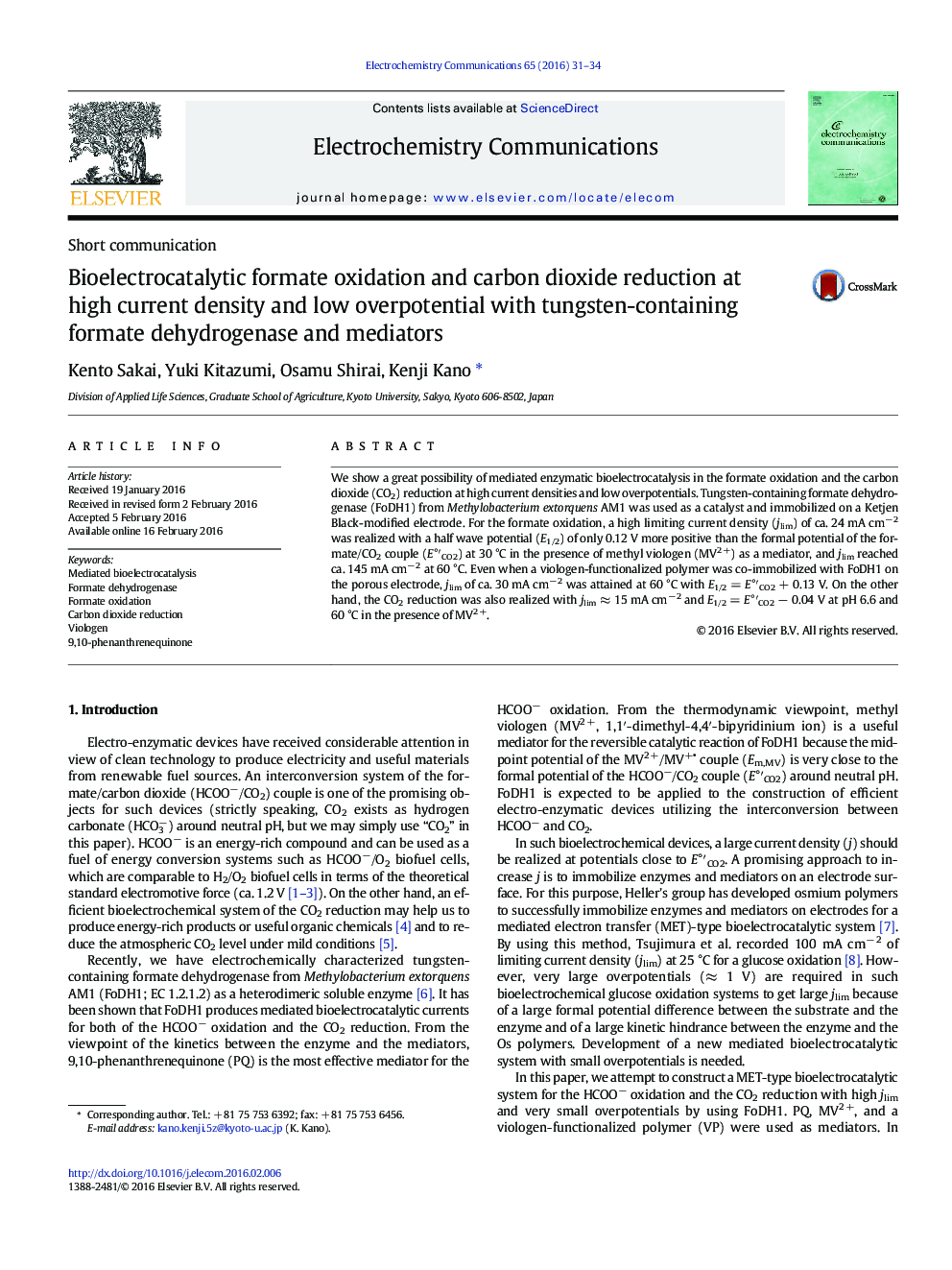| Article ID | Journal | Published Year | Pages | File Type |
|---|---|---|---|---|
| 178734 | Electrochemistry Communications | 2016 | 4 Pages |
•The mediated bioelectrocatalytic formate oxidation and CO2 reduction was realized.•150 mA cm− 2 for the formate oxidation with E1/2 = E°′CO2 + 0.12 V•15 mA cm− 2 for the CO2 reduction with E1/2 = E°′CO2 − 0.04 V•A viologen-functionalized polymer with merits in the immobilization and the mediator function
We show a great possibility of mediated enzymatic bioelectrocatalysis in the formate oxidation and the carbon dioxide (CO2) reduction at high current densities and low overpotentials. Tungsten-containing formate dehydrogenase (FoDH1) from Methylobacterium extorquens AM1 was used as a catalyst and immobilized on a Ketjen Black-modified electrode. For the formate oxidation, a high limiting current density (jlim) of ca. 24 mA cm− 2 was realized with a half wave potential (E1/2) of only 0.12 V more positive than the formal potential of the formate/CO2 couple (E°′CO2) at 30 °C in the presence of methyl viologen (MV2 +) as a mediator, and jlim reached ca. 145 mA cm− 2 at 60 °C. Even when a viologen-functionalized polymer was co-immobilized with FoDH1 on the porous electrode, jlim of ca. 30 mA cm− 2 was attained at 60 °C with E1/2 = E°′CO2 + 0.13 V. On the other hand, the CO2 reduction was also realized with jlim ≈ 15 mA cm− 2 and E1/2 = E°′CO2 − 0.04 V at pH 6.6 and 60 °C in the presence of MV2 +.
Graphical abstractFigure optionsDownload full-size imageDownload as PowerPoint slide
